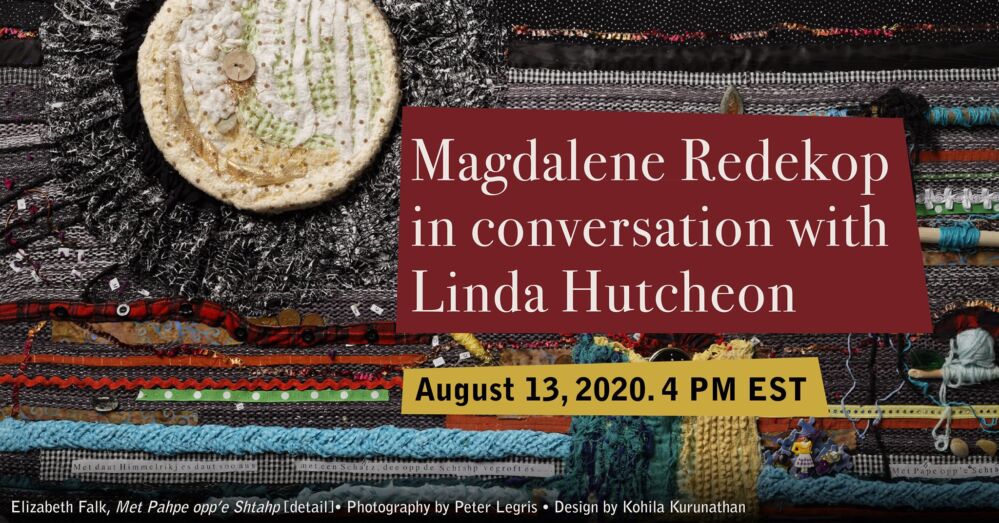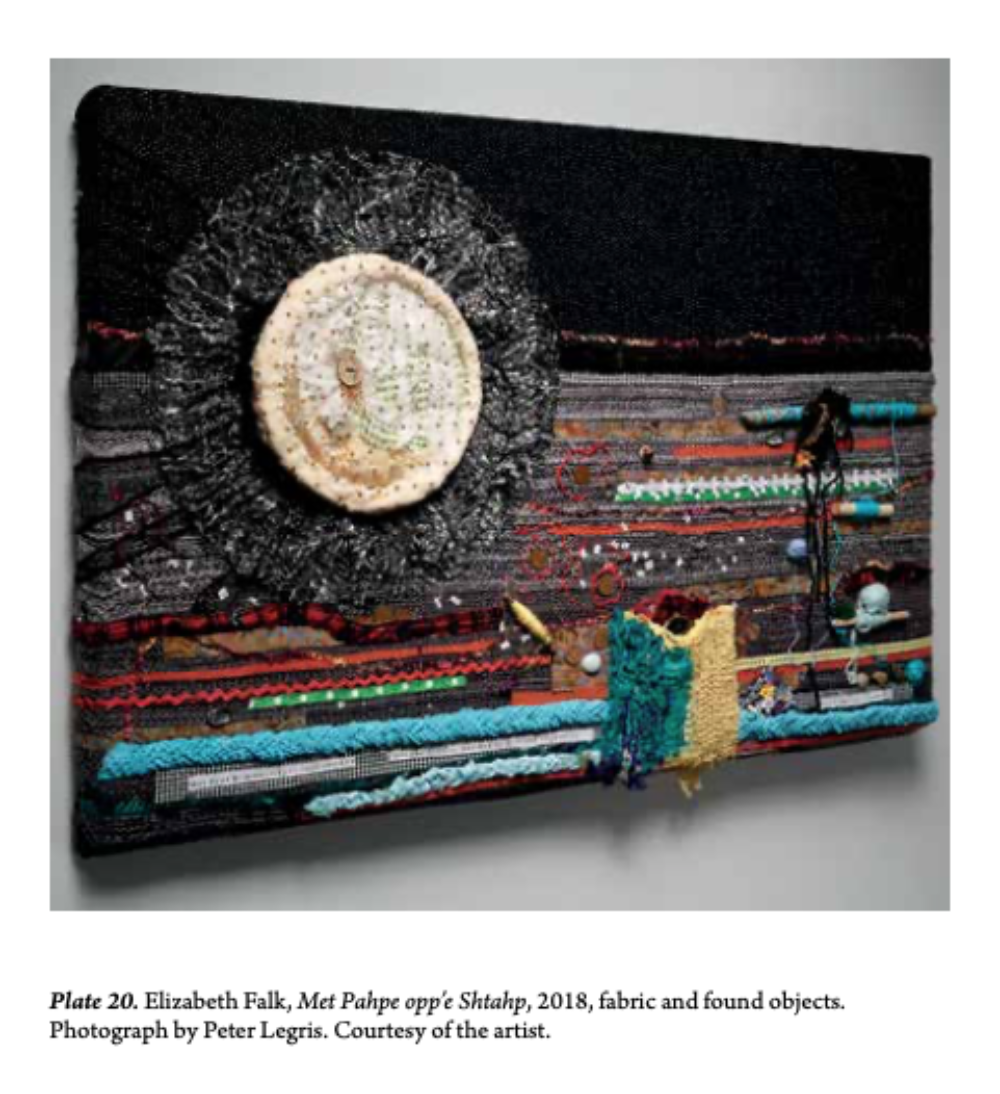If you have seen the posting for Magdalene Redekop’s upcoming Q & A with Linda Hutcheon on August 13th, you may be intrigued by the background on the banner—a detail from “Met Pahpe opp’e Shtahp,” fabric art created by Redekop’s sister Elizabeth Falk.

Redekop says: “The photograph of it by Peter Legris that appears in Making Believe is one that he took from the side in order to show the sculptured quality of the piece. When Kohila Kurunathan designed the banner she was playing with the colours and shapes in this photograph, as well as with those on the cover of Making Believe (designed by David Drummond).
I share this here because Linda and I may well begin our conversation by reflecting on the questions that are made visible by threads in this fabric art—questions about land, about the dialogue between Mennonites and Indigenous peoples, about decorative art, etc.

Since cultural translation and dialogue are a central value in my book, it was a joy to see how Kohila entered the Spielraum and joined in play with the other artists. I especially love how in her arrangement the details about the timing of our Q&A appear just below the pocket watch.
Here is an excerpt from Making Believe: “The Low German word for field, shtahp, appears in the title and in a passage from the parable of the buried treasure. Met daut Himmelrikj es daut soo aus met een Scha(h)tz, dee opp de Schtahp vegroft es, ‘The kingdom of heaven is like unto treasure hid in a field.’
Every detail in this field is alive and changeable depending on your angle of vision…I especially like the crooked smile on the face of the one-eyed woman in the moon. The clock in the pocket reminds me of my father’s pocket watch, but the minute hand is actually moving. If time is the buried treasure, then it is only now that matters.”
About the Book
Making Believe responds to a remarkable flowering of art by Mennonites in Canada. After the publication of his first novel in 1962, Rudy Wiebe was the only identifiable Mennonite literary writer in the country. Beginning in the 1970s, the numbers grew rapidly and now include writers Patrick Friesen, Sandra Birdsell, Di Brandt, Sarah Klassen, Armin Wiebe, David Bergen, Miriam Toews, Carrie Snyder, Casey Plett, and many more. A similar renaissance is evident in the visual arts (including artists Gathie Falk, Wanda Koop, and Aganetha Dyck) and in music (including composers Randolph Peters, Carol Ann Weaver, and Stephanie Martin).
Confronted with an embarrassment of riches that resist survey, Magdalene Redekop opts for the use of case studies to raise questions about Mennonites and art. Part criticism, part memoir, Making Believe argues that there is no such thing as Mennonite art. At the same time, her close engagement with individual works of art paradoxically leads Redekop to identify a Mennonite sensibility at play in the space where artists from many cultures interact. Constant questioning and commitment to community are part of the Mennonite dissenting tradition. Although these values come up against the legacy of radical Anabaptist hostility to art, Redekop argues that the Early Modern roots of a contemporary crisis of representation are shared by all artists.
Making Believe posits a Spielraum or play space in which all artists are dissembling tricksters, but differences in how we play are inflected by where we come from. The close readings in this book insist on respect for difference at the same time as they invite readers to find common ground while making believe across cultures.
About the Presenters
Magdalene Redekop is Professor Emerita of English at the University of Toronto. She is the author of Mothers and Other Clowns: The Stories of Alice Munro.
Linda Hutcheon is Professor Emerita of English and Comparative Literature at the University of Toronto. She has collaborated iwth Michael Hutcheon, M.D., Professor of Medicine, U of T, on the intersection of medical and cultural history, studied through the vehicle of opera. They have published four books on topics such as disease, death and the body—most recently, Four Last Songs: Aging and Creativity in Verdi, Strauss, Messiaen, and Britten (U of Chicago Press, 2015).
Posted by U of M Press
July 28, 2020
Tagged art, books, community, culture, design, events, literature, memoir, mennonite
Manitoba 150 Excerpt #4: Winnipeg 1912 Manitoba 150 Excerpt #5: Winnipeg Beach
